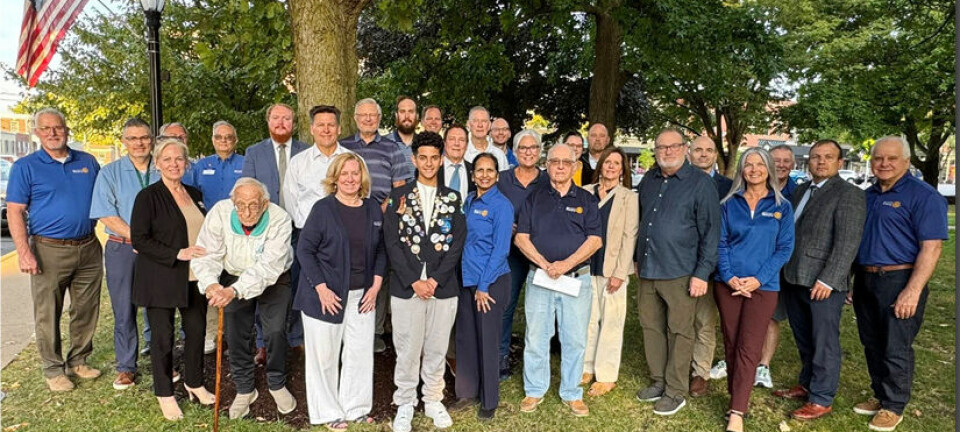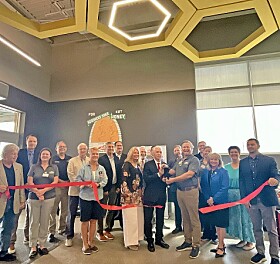History
Looking for Letha
Letha House
Medina County Historical Society
The mysterious origins of a future philanthropist
In July 1900, two seemingly unrelated events occurred that over the years significantly affected Medina.
The first happened on July 7. Two Corrigan brothers, James and John, and their families had been sailing in James Corrigan’s sleek, two-masted schooner, the Idler. James Corrigan was one of the founders of Corrigan-McKinney Steel (which later became Republic Steel) and this new yacht was a symbol of his success as one of Cleveland’s captains of industry.
The Corrigan brothers were accompanied by their wives, daughters, sons-in-law and a baby granddaughter. After a week of cruising, all the men, having matters to attend to, disembarked and returned to Cleveland by rail. The women and the ship’s crew continued.
Twenty miles from Cleveland, a violent storm suddenly erupted. Sixty-mph winds slammed into the ship and quickly sank it. Eight crew members survived, as did one female passenger. Five Corrigan women and the baby girl drowned.
The second event occurred later that month. On July 30, 20-year-old Letha Brewster Morse of Lafayette Township married Will House, a neighbor. Because Letha added the name “Brewster” to her marriage certificate, it is apparent she already knew she was a foster child. At some point, her foster mother Frannie Morse evidently told her she was the offspring of a Canadian immigrant named Margaret Brewster.
But whether Morse also told her Margaret was the sister of the Corrigan millionaires is a mystery – one of many that historian Joann King encountered in writing the biography Letha E. House: From Foundling to Philanthropist.
After the tragedy occurred, House knew. Morse urged her to contact the family, and a grieving James Corrigan immediately accepted House, who closely resembled his deceased niece, Etta.
“I really didn’t know much about Letha House,” King said when asked by Charles C. Griesinger, director of the Letha E. House Foundation, to write the biography.
And she had no idea that it would take five years – from 1998-2003 – to complete the book after years of endless research through ancient newspapers and documents and trips to places like Stratford, Ontario; and Tacoma, Washington.
What is clear is that House’s mother Margaret immigrated from Canada with her brothers, James and John. And on Valentine’s Day 1880, she married a man named John Brewster in Cleveland. She was five months pregnant.
What is not clear is who this man was. According to Cleveland city directories, there were several John Brewsters, including a 34-year-old native of Ireland who died in a Cleveland hospital two weeks after the marriage. Margaret quickly headed back to her father’s home in Stratford, Ontario, where she gave birth to Letha.
How the infant Letha, at 9 months, appeared in Lafayette in Medina County as the foster child of George and Frannie Morse is another mystery.
Where did Margaret go?
Was it the Corrigans who set up the arrangement with the foster parents?
Had they disowned their errant sister, Margaret Brewster? This is possible, as King found her grave in Tacoma on a modest plot with no headstone. Margaret, never listed as an heir to any family money, died in 1906.
However, growing up, House was well taken care of and lived a quiet, normal life in rural Lafayette. Her tastes never changed despite the large sums of money she eventually inherited.
According to King, “simplicity and frugality” were House’s style. Instead of moving to Cleveland’s Millionaires’ Row, where the Corrigans lived, she built a substantial but not extravagant house on Lake Road and remained in the same place with the same people she had grown up with.
Her one extravagance was hiring a driver. She never learned to drive, and after her husband’s death, she bought a Buick and hired Mack Kelley to chauffeur her around.
Her philanthropy began with donations to various charities and churches.
“Her attorney Charles Griesinger suggested that she consider establishing a foundation—something that would fund Medina County projects, rather than scatter her resources among a myriad of charities,” King writes.
That was the origin of the three trusts she established: the Student Loan Trust, the Medina Park Trust and the Letha E. House Foundation.
House died on June 3, 1968 and never witnessed her most celebrated gifts: the restoration of Medina’s Victorian Square with bequests from her trusts, and the Square’s crowning touch – the iconic gazebo.










































